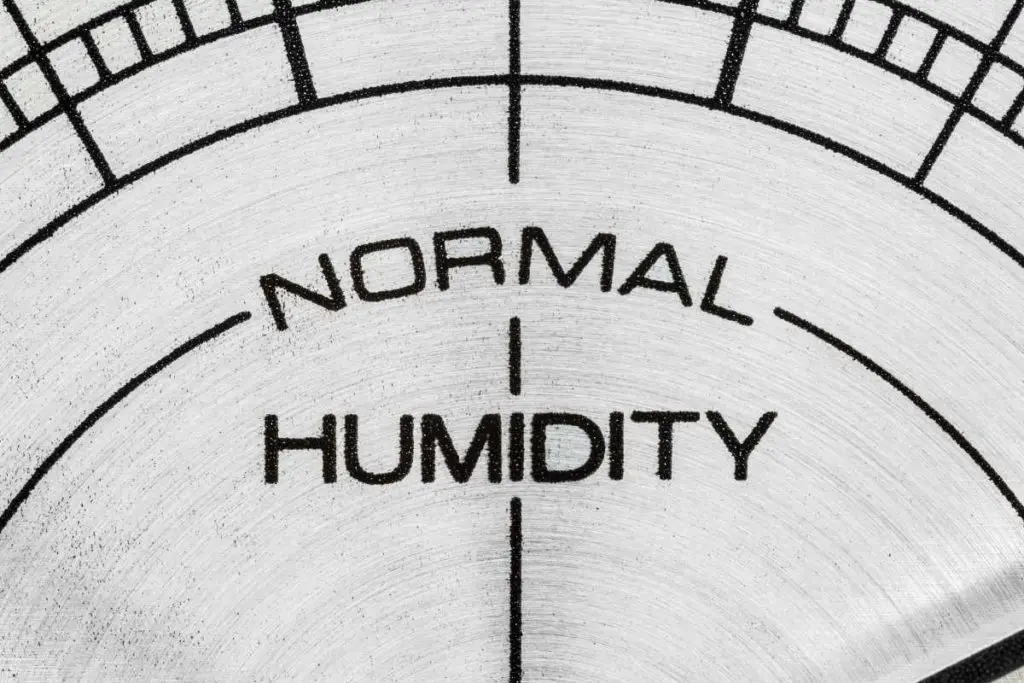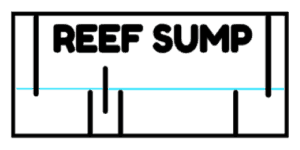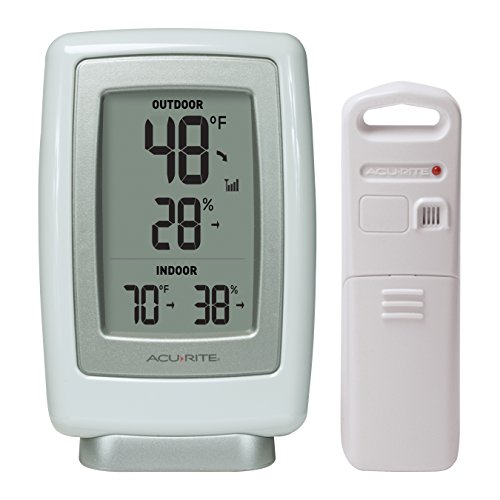
At one point I more than doubled my gallons of reef tank water in my home when I added a 210-gallon reef tank and plumbed in a 50-gallon low boy frag tank. My new big tanks were placed in the only place I could fit them in my house, my unfinished basement. One problem that I didn’t account for was very bad humidity issues not just in the basement but throughout my entire home which has two stories. The tank sits near my forced air furnace and I found that overall humidity increased throughout my entire house.
High humidity can be a terrible issue for homeowners to have consistently. With high humidity, warm air will seek the coldest areas of your house and in an attempt to escape will collect in those areas. The most significant area where I saw collection was on my home windows.
My wife and I would go around the house wiping down condensation on all the windows every day to keep the moisture from building up. High humid collection areas can lead to moisture damage to flooring and walls. In some of the cold corners of my house, I would find damp drywall. The worse thing that can happen with constant high humidity is mold growth. If mold begins to grow in damp areas of your home it can spread quickly and require thousands of dollars of remediation costs to fix. If remediation costs aren’t enough, mold can be hazardous to one’s health too.
My 210-gallon reef tank with sump and plumbed in 50-gallon frag tank evaporate a large amount of water to the tune of 10-20 gallons a week. I found out very quickly that that much water going into my home air was something that needed to be reduced. To fix room humidity issues from a reef tank you need to prevent evaporation, reduce evaporation, and remove humidity from the room. Read to find out how I dealt with this issue in my home and strategies you can use to help control humidity from your reef tank aquarium.
Monitoring humidity levels in your home and area where your reef tank is located
The first step in getting your humidity issues under control is to know what your relative humidity is where the reef tank is and in different parts of your house. To do this you’ll want to use a humidity gauge. Most humidity gauges show the temperature and humidity of the room that it is located in. I like to use a gauge that has a wireless sensor that shows you the temp/humidity in the room and where the sensor is located. Most people keep the gauge in the house and place the sensor outside for indoor and outdoor readings. I like to use the gauge to tell me what my basement humidity is and what my main living area’s temp is so I keep the gauge in the kitchen and the sensor in the basement near my big tank.
The model that I use is the AcuRite 00611 Indoor Outdoor Thermometer with Wireless Temperature sensor and Hygrometer.
AcuRite 00611 Indoor Outdoor Thermometer with Wireless Temperature Sensor & Hygrometer
Monitor conditions in your home environment. By tracking indoor and outdoor temperature and humidity conditions, you gain the information you need to take action.
Another good and lower-priced option is the AcuRite 00613 Digital Hygrometer & Indoor Thermometer Pre-Calibrated Humidity Gauge which does the same thing but doesn’t have the secondary wireless sensor for outdoors or another room.
AcuRite 00613 Digital Hygrometer & Indoor Thermometer Pre-Calibrated Humidity Gauge
An all-in-one digital indoor home thermometer and humidity gauge, the AcuRite Indoor Humidity Monitor gives you a full picture of your inside world.
Once you know your levels you can appropriately strategize how to go about reducing and when to put the mitigation process in place when humidity levels increase at different times of the day or in different weather seasons. A good goal to shoot for is 50% humidity in your rooms.
How to Prevent Evaporation from Reef Tank
Preventing evaporation from a reef tank is a hard task to tackle, with not many options for consideration. The most significant thing you can do is cover your reef tank with a material like glass or acrylic that will not allow evaporation to escape from the tank.
There are several disadvantages to sealing a tank though and generally, it is not recommended to fully seal the top of a reef tank. With a sealed top on a reef tank, gas exchange between the reef tank and the air outside of the tank can be an issue. If the gas exchange is inhibited it can lead to a build of carbon dioxide within the tank which is harmful to both coral and fish. This is usually a non-factor if you run a protein skimmer or sump on your reef tank as those methods allow for gas exchange. Another drawback to a solid lid cover is with lights. Lights are one of the most expensive components of a reef tank and the money is spent to deliver the optimal amount and par to your corals. Unfortunately, a solid lid will diffuse some of the light before it reaches your coral making it not worth the lid. Powerful lights above the lid can also cause a heat issue in the tank as the lights warm the surface of the lid and the water below it.
Considering the various drawbacks to having a lid I feel it isn’t something that should be done with reef tanks unless you run a fish-only system, keep very low light coral, and have good gas exchange capability somewhere else in the system. I do believe it to be necessary to cover the tank, but I like to keep it as open as possible opting for DIY screen mesh tops.
Reduce Airflow over the tank
One factor that does help a little is to reduce the amount of airflow when possible over the top of the reef tank. Try not to locate your tank in areas where fans blow over the top of the tank.
Cover your sump
Another way to help prevent evaporation is to seal your sump if you use one on your reef tank. This is not always an easy task as most sumps aren’t made to be sealed and depending on your equipment configuration you will need to find the right material to cut and customize covers for your sump. Acrylic is a good option for a custom sump cover. Expect some, but a minimal reduction from covering your sump unless it is a very large sump.
How to Contain Humidity and Evaporation from your reef tank
Once you have looked at some prevention methods the next strategy you can look at is containing humidity and evaporation from your reef tank. By containing I mean keeping the humidity in a certain amount of space near and around the tank before it can escape to other parts of the house. Your tank size, house, and installation will vary immensely on how much you can do with this step, but containing humidity to a certain location makes it easier to manage. An example of humidity containment is having a fish room that contains the reef tank and all equipment on one side and the front viewing section is sealed on the other side of the room. By having a small sealed room the humidity can be trapped there and mitigated before dissipating throughout the house. A plastic vapor barrier on the ceiling and walls can help keep moisture from escaping. Again, this is not always a possibility, but if you can seal your tank in a smaller room it makes the next step removing humidity much easier.
How to Remove Humidity from a Room with an Aquarium
Removing humidity from the air near the tank is probably the most practical and effective way to prevent and fix humidity issues from a reef tank. The two most common ways to do this are through the use of an exhaust fan and a dehumidifier.
Using an exhaust fan to remove humid air

An exhaust fan is the same thing that you find in most bathrooms, it is simply a fan that pulls air from a room and exhausts it outside. Exhaust fans are a good option if your humidity levels are high but not excessive and they work especially well if you can contain humidity to a small room as outlined above. Exhaust fans can be tricky to install as you have to run an exhaust line to where you want the fan, have an opening to the outside, and usually need wiring to connect it to power. For these issues, you want to make sure you consult with a home expert, electrician, and other experts before you install an exhaust fan. There are good commercial grade fans on the market that have humidity sensors that turn off and on depending on what you set it at and what it is reading in the air. Another short term solution is to simply use a window fan and turn it so that the air pushes from the room to the outside, probably not the best long term solution by having the window open all time.
Bathroom Exhaust Fan with Light, 40W Fan with Humidity Sensor
Make Life Much Easier with OREiN Humidity Sensing Ventilation Bathroom Fan!
Using a dehumidifier to manage humidity from a reef tank
GE Energy Star Portable Dehumidifier 35 Pint
Removes 35 pints of moisture from the air every day. This model is ideal for very damp rooms, with excessive moisture, anywhere in the home, basement or garage.
The use of a dehumidifier is probably the most slam dunk option for controlling humidity from a reef tank. A dehumidifier is an appliance that directly removes humidity from the air.
Dehumidifiers work by pulling air across a very cold coil causing it to condensate on the coil. The condensation is then collected in a bucket where it can be manually emptied or plumbed to drain automatically. Dehumidifiers come in many shapes and sizes and depending on the amount of humidity in your room/house and the size of the room you’re dealing with you’ll want to choose an appropriate size dehumidifier. Here is a general recommendation of sizes to use:
- Existing humidity of 50% use 30-45 pint per day capable model
- Existing humidity of 70% use 50-70 pint capable per day model
- Existing humidity of 90% use 40-90 pint capable per day model
There are a few drawbacks to using a humidifier with the first being energy consumption. A good dehumidifier will have the capability to sense the humidity in the room and be able to turn off and on based on the level you set. With that said, dehumidifiers run off electricity and have a monthly power consumption cost to run. If you can find an Energy Star compliant model it will help with efficiency and your power bill. Dehumidifiers also can put off a little heat as they run continuously. If heat is an issue in your area it’s another factor to consider. Probably one of the most prevalent drawbacks is the need to empty the bucket on a dehumidifier. My dehumidifier needs to be emptied once per day and it has a large bucket. This is another time taking task to be done along with the rest of the maintenance that comes with a reef tank.
Thankfully there are models of dehumidifiers that can be plumbed into a drain. For my model, I can easily connect a garden hose to it so that it drains into a floor drain next to my home’s furnace. The last drawback to a dehumidifier is the sound it makes. Dehumidifiers make a fan-blowing sound that can vary in volume from model to model. Some dehumidifiers have different fan settings that make the sound less intrusive, but it is a factor to consider depending on where you place the appliance, I would not want it in my living room for instance.
Will a dehumidifier make my reef tank evaporate quicker?
Generally, no, a dehumidifier will not cause a reef tank to evaporate quicker. This question comes up a lot as people might not want to have to fill their ATO up more frequently. Dehumidifiers are designed to pull water out of the air and not out of a tank. There is the possibility that it does slightly increase evaporation for a few reasons. Dehumidifiers produce a little bit of heat while they are running and if the heat raises the ambient temperature of the room evaporation can increase in the tank. Also, a humid room might evaporate less quickly than a dry room so as your bringing overall humidity down evaporation may increase slightly in the tank. I would consider both of these to be marginal and not worth the benefits of having humidity at optimal levels.
How ReefSumper manages humidity issues with his tanks
For my set up I found that humidity in my basement where my 210 reef tank and 50-gallon frag tank were at unacceptable levels and my furnace was distributing the humid air throughout my home causing issues. I had little option in the contain and prevent strategies as I do not believe a solid cover is good for reef tank health and I did not have a way to seal the tank in its room. My unfinished basement is rather large and I did not think an exhaust fan would do much for the space it would need to exhaust. This left me with the only option to run a dehumidifier. The model I choose to go with was the GE 50 pint portable dehumidifier.
ReefSumper recommended dehumidifier GE 50 Pint Dehumidifier
This has performed very well for me so far. This model of dehumidifier had the most important features that I was looking for including:
- The ability to hard plumb to a drain
- Automatic shut off when the bucket is full
- Energy Star rated
- Programmable
GE Energy Star Portable 50 Pint Dehumidifier
GE Appliances Energy Star portable dehumidifiers for basements, crawl spaces, garages, bedrooms, bathrooms, closets, or large rooms anywhere in your home or office are designed for simple, effective moisture removal, for optimal comfort.
Since installing and running the dehumidifier it’s made a huge difference in humidity in my basement and throughout the house. I no longer have to wipe down my windows and damp walls and mold are no longer a concern.






